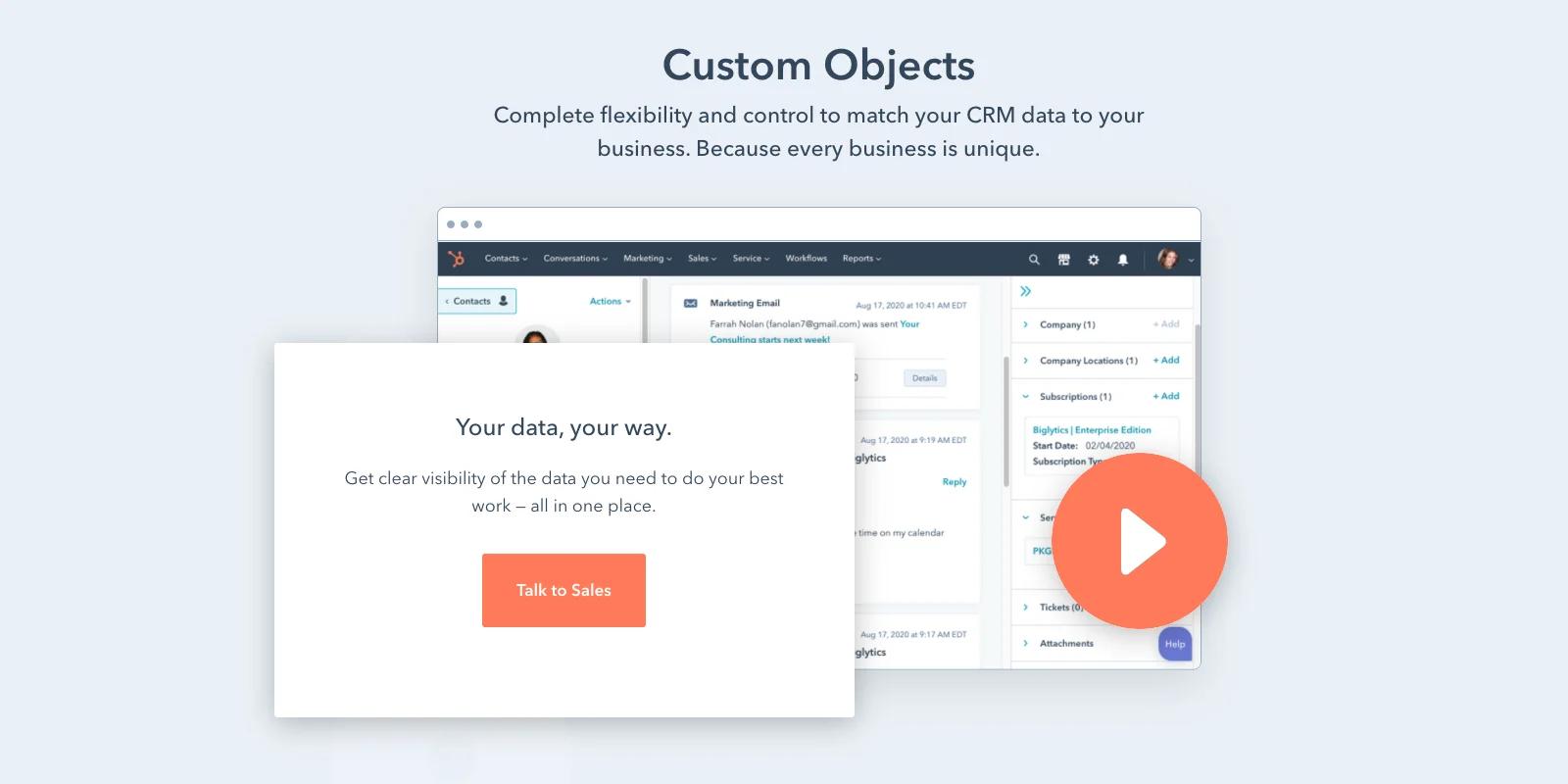It's been more than a month since HubSpot held their infamous INBOUND 2020 event! The event was filled with exciting guest speakers, from the likes of John Legend to HubSpot’s very own Brian Halligan.
Despite the event being held virtually, HubSpot didn’t shy away from introducing new products and features for all current and future HubSpot users. But the new product feature that I want to break down today is the new custom objects feature—A true game changer!
What are HubSpot Custom Objects?
When we say objects we aren’t talking about 3D shapes that pop up in front of our own eyes (maybe that might be something for the future).
If you’re a HubSpot user that uses their CRM platform to facilitate customer relationships, maintain your sales pipeline, or automate all your marketing efforts, then you’re already dealing with objects such as contacts, companies, deals, and tickets.
This is the simplest form that objects can be used as, but when you add custom objects to the equation, HubSpot customers can store all their data in their portal and structure it however they’d like. It’s like building your yogurt cup at the local Yogurtland just the way you want it.
Why HubSpot Custom Objects are a Big Deal
They said it best: HubSpot custom objects give customers complete flexibility and control to match their CRM data to their business.
Customers can structure their data the way they want, and align it in a way that is unique to their business. That said, there are 3 HubSpot features specific to the custom object beta that HubSpot wants you to know about!
1. All your Data Lives in HubSpot
Again, every company is different. That means that not every company’s data will fall under the default objects that I mentioned earlier. These include contact, companies, deals, etc.
The point of custom objects is to eliminate this potential problem that can create a bottleneck for a company that can’t run its data the way that’s best for its team. Want to know the best part?
All the custom objects are stored inside your CRM ready for you to start building your data ecosystem. Have your data work for you.
2. Workflows Suited for Custom Object Data
Not only will your CRM be better suited to house all of your company’s data, but your marketing automation efforts will see more success.
It’s simple. If you already have experience creating workflows, then all you need to do is create custom object-based workflows and set enrollment triggers specific to the custom object properties that you create.
This is all triggered by your company’s data, eliminating the need to fit a model that simply doesn’t resonate with your business.
3. What's Data without Reporting?
Track what you want, when you want, and however you want, all according to the custom objects you create!
HubSpot ensures that your custom objects are pleasing to your eye by allowing users to manually create charts that tell their reporting story.
Reporting dashboards are made up of objects that are specific to business data.
Getting started with HubSpot custom objects
Using a new HubSpot feature for the first time comes with a lot of questions. Luckily, we’ve compiled a list of FAQs about the custom objects feature with solutions that’ll help your business begin to shape your data warehouse within HubSpot.
What Falls Under Standard Objects?
The standard objects in HubSpot are default objects that may or may not align with the way your business operates. Contacts, companies, deals, and tickets are all standard objects.
If none of these objects represent the transactions or operations your business runs, then that’s what custom objects are for.
How to Create Custom Objects or Properties for Business Needs
This is where the fun begins. As I mentioned, HubSpot has default objects that are associated with default properties.
HubSpot now recognizes that not all default properties fit every business. But before you start dabbling through the feature, learn about the property field types in HubSpot and how to manage your custom properties.
Custom Data that Lives on Another Platform
This is the beauty of HubSpot. The platform doesn’t discriminate! Teams can import objects in bulk and update them accordingly once they live in HubSpot.
Whether you’re importing data from Salesforce or importing a CSV file, HubSpot is ready to help you every step of the way.
At last, no more having to deal with moving from platform to platform to find the data that you’re looking for. HubSpot features keep getting better and better.
Want to Learn HubSpot Inside and Out?
The custom objects feature is only one small piece of the whole pie. If you aren’t yet a HubSpot user and want to learn more about the platform, talk to one of our HubSpot pros!
Our team would love to share more about the HubSpot features we love and how the platform can scale your business and centralize every aspect of your team.
For current HubSpot users: Start storing and structuring all your data the way you want it! Take control and don’t look back.




